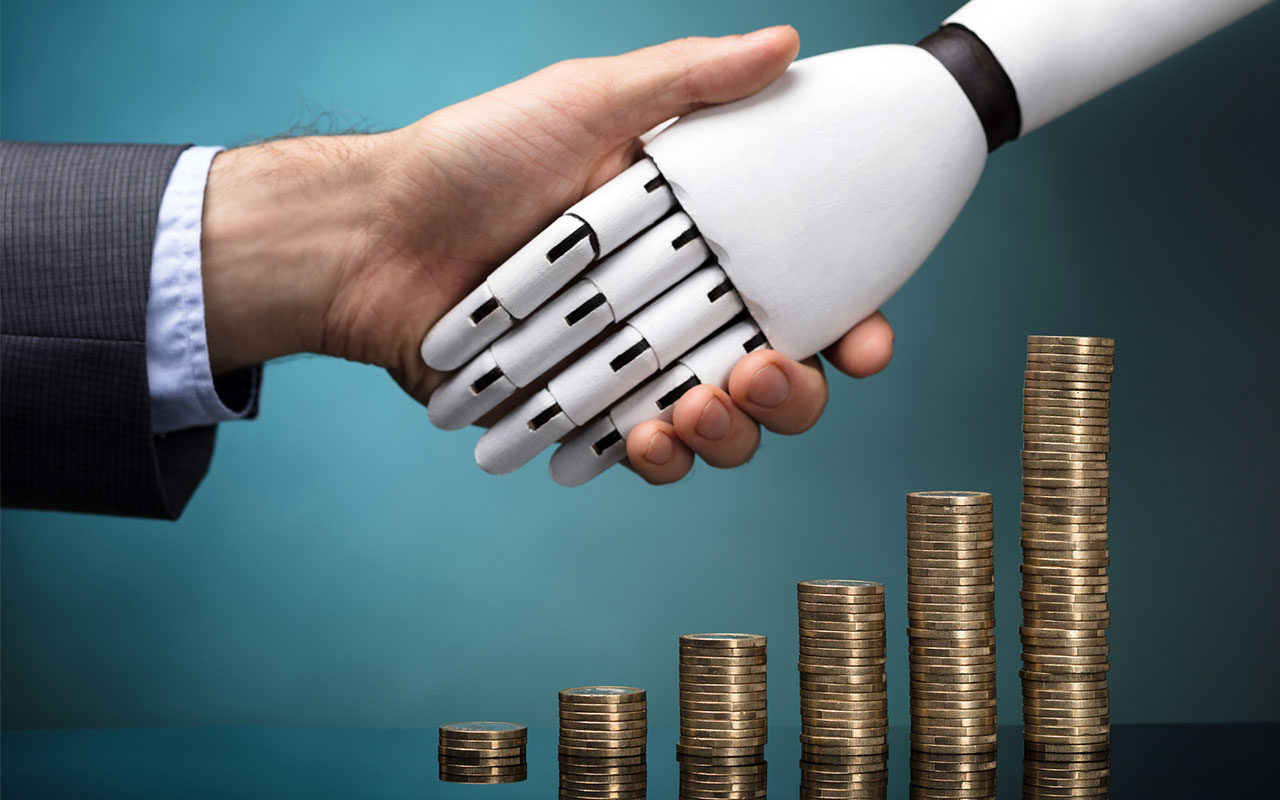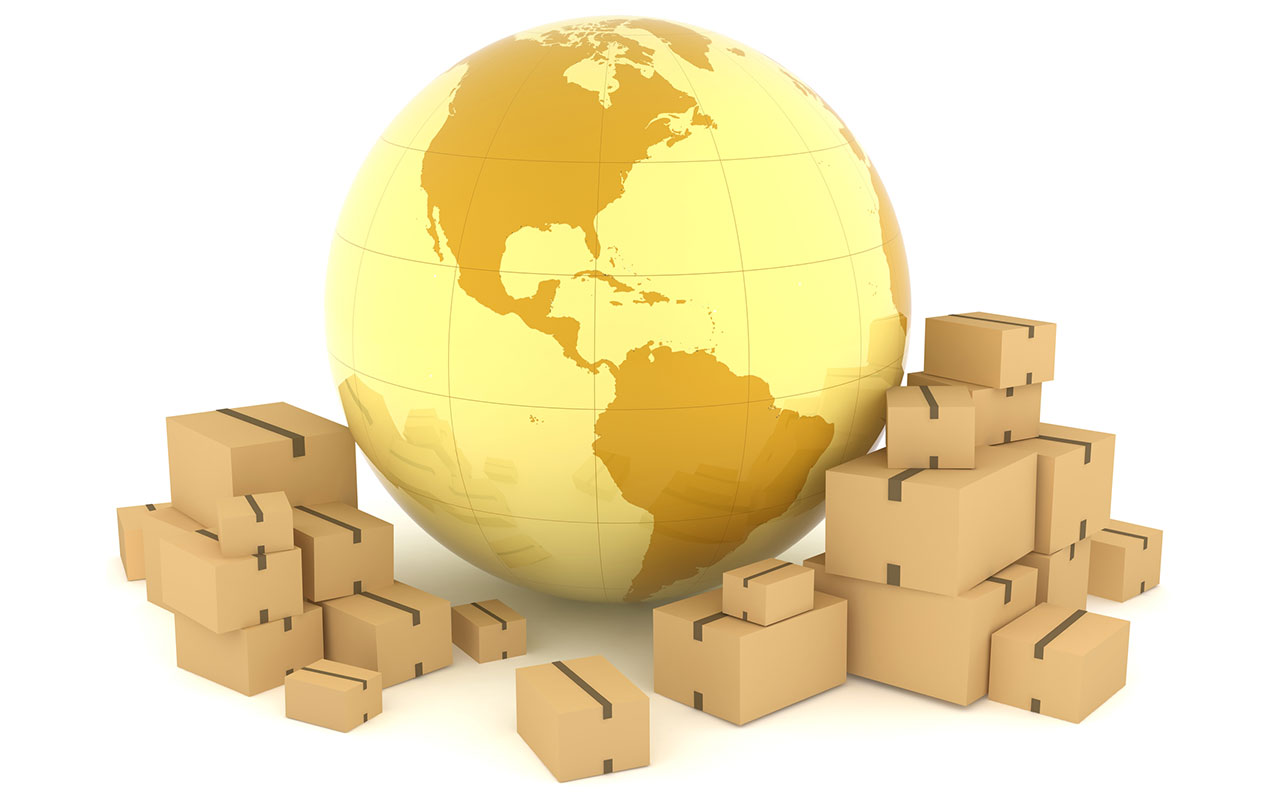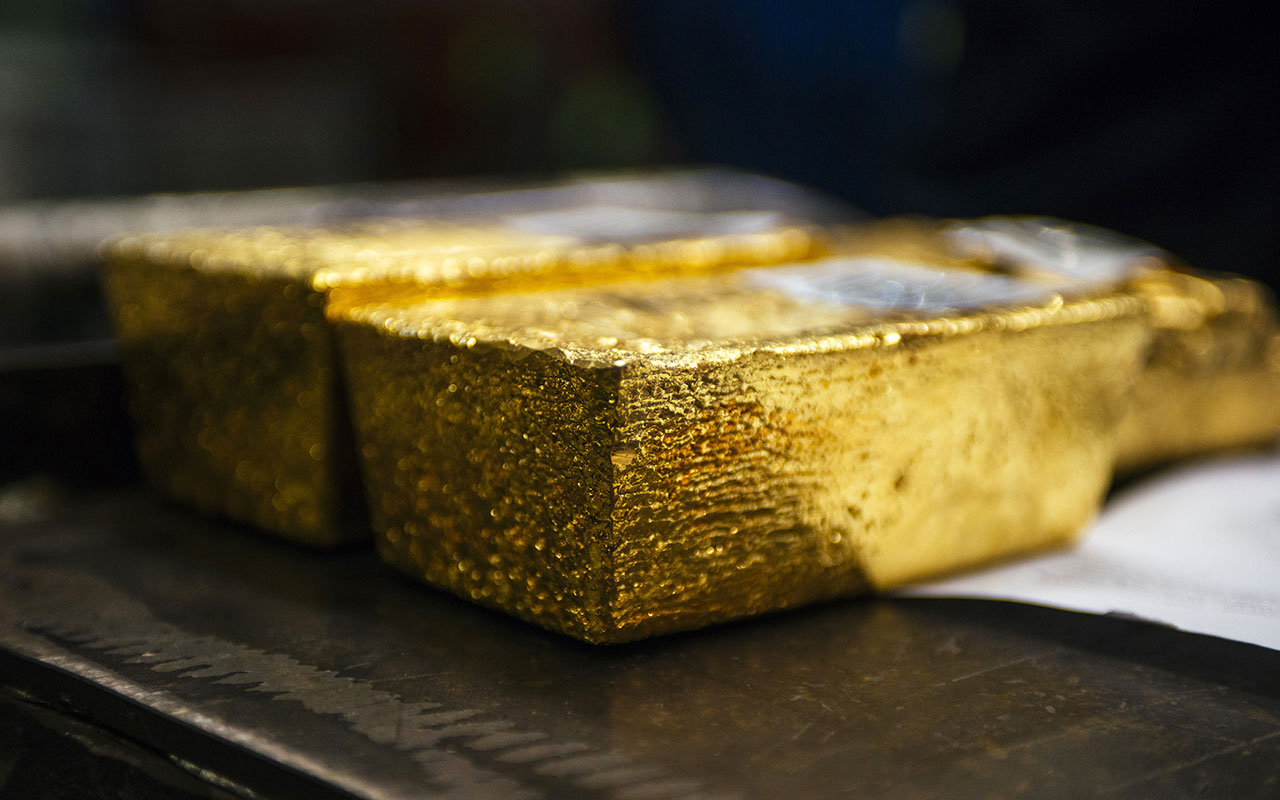The 19 Best ETFs to Buy for a Prosperous 2019
Wall Street pros, the analyst community and individual investors alike were thrown for a loop in 2018.


Wall Street pros, the analyst community and individual investors alike were thrown for a loop in 2018. American tariff disputes with the rest of the world, wild energy-price swings and global growth concerns not only ravaged the market at various points, but also has the experts preaching caution as we enter the new year. The best ETFs for 2019, then, are going to need to accomplish a couple specific goals.
For one, you’ll want some ETFs that position you defensively while still allowing you to enjoy at least some upside should the market head higher despite all the headwinds it faces. Numerous expert market outlooks have the Standard & Poor’s 500-stock index climbing in 2019, but none of them are exuberant and all of them warn of numerous potential pitfalls. Anchoring your portfolio with funds that emphasize, say, low volatility or income can put you in a strong position no matter what the market brings.
You also need to take your shots – stocks may end up being sluggish as a whole, but that doesn’t mean certain areas of the market can’t explode all the same. So some of the top ETFs for the year ahead will focus on specific sectors, industries and even other areas of the world to try to generate outperformance.
Here are the best ETFs to buy for 2019. These 19 funds run the gamut, from highly diversified baskets invested in thousands of companies, to concentrated portfolios that use just a couple dozen stocks to benefit from a specific theme. There are ETFs for conservative investors and risk takers alike. And while most of these picks are passive index funds, there are even a few ETFs that tap the brainpower of skilled active management. Take a look:
Disclaimer
Data is as of Jan. 14, 2019. Yields represent the trailing 12-month yield, which is a standard measure for equity funds.

Vanguard Total Stock Market ETF
- Type: Large-cap blend stock
- Market value: $99.1 billion
- Dividend yield: 2.0%
- Expenses: 0.04%
The Vanguard S&P 500 ETF (VOO) – or at least some S&P 500 tracker fund – typically makes most “best ETFs” lists in any given year. That’s because even the best money managers in the world have a hard time beating the market.
The SPIVA U.S. Year-End 2017 report showed that in 2017, 63.08% of large-cap managers underperformed the S&P 500. That’s not good, and it gets worse as time goes on – 80.56% underperformed in the three-year period, 84.23% in the five-year, 89.51% in the 10-year and 92.33% in the 15-year.
Beating the market certainly is much more difficult for “mom ‘n’ pop” investors, who might spend only a couple hours every month examining their investments … so why not simply match the market with the VOO or a similar fund?
But this year, investors may want to consider the Vanguard Total Stock Market ETF (VTI, $131.96). Why? Because Vanguard itself sees it as the better option for its employees. In 2018, Vanguard removed the S&P 500-tracking Vanguard Institutional Index Fund (VINIX) from its 401(k) and replaced it with the Vanguard Total Stock Market Index Fund (VTSMX).
“We believe the (VTSMX) is the best proxy for the U.S. market, offering exposure to large-, mid-, and small-cap stocks, whereas Vanguard Institutional Index Fund concentrates on large-cap stocks,” a spokesman told MarketWatch in confirming a Philadelphia Inquirer report about the change.
The VTI provides exposure to more than 3,600 stocks of all sizes – from $783.4 billion Microsoft (MSFT) to $5.8 million Pernix Therapeutics Holdings (PTX) – giving investors much more comprehensive exposure to the U.S. stock market. At the same time, VTI’s holdings are weighted by market capitalization, which means the largest companies still have the most sway in the ETF’s performance.
The result? The VTI performs very similarly to the VOO, beating it by a few basis points some years, falling behind a little in others. It’s also one of the cheapest funds you can buy: For a skinflint 0.04% in expenses, you pay just $4 annually for every $10,000 invested.
Learn more about VTI at the Vanguard provider site.

Legg Mason Low Volatility High Dividend ETF
- Type: Low-volatility dividend stock
- Market value: $572.74 million
- Dividend yield: 3.8%
- Expenses: 0.27%
As mentioned earlier, financial experts have a wide range of opinions on how 2019 could turn out – and not all of them are rosy. So the best ETFs for 2019 may be the ones that simply lose the least.
Enter low-volatility ETFs, which were the talk of Wall Street during the final quarter of 2018. These funds target stocks that tend to move less drastically than the broader market – a vital trait when the broader market is heading lower. The thing is, these kinds of funds also can lag the markets on their way back up. But the Legg Mason Low Volatility High Dividend ETF (LVHD, $29.32) helps make up some of the difference by delivering high income on top of more stable price performance.
LVHD’s portfolio consists of anywhere between 50 and 100 stocks that feature not just lower volatility, but also higher dividends. The ETF screens a universe of 3,000 stocks for companies that pay “relatively high sustainable dividend yields.” It then scores their stocks higher or lower based on price and earnings volatility. From there, it caps any stock’s weight at rebalancing at 2.5%, and any sector’s weight at 25% (except real estate investment trusts, which can never exceed 15% of the fund). Those percentages can move between rebalancing as stocks rise and fall.
Legg Mason Low Volatility High Dividend currently is heaviest in two low-vol mainstays – utilities (26.4%) and consumer staples (18.2%) – with additional double-digit holdings in real estate (15.0%) and consumer discretionary (10.3%). Top holdings are a who’s who of rock-solid companies, such as McDonald’s (MCD), Kimberly-Clark (KMB) and electric utility Duke Energy (DUK).
How effective is this strategy? Well, during the messy fourth quarter of 2018, Legg Mason’s fund lost just 5.42% while the S&P 500 tanked by 13.52%, according to data from Morningstar.
Learn more about LVHD at the Legg Mason provider site.

Distillate U.S. Fundamental Stability & Value ETF
- Type: Value stock
- Market value: $17.2 million
- Dividend yield: N/A*
- Expenses: 0.39%
Several market experts have voiced a preference for value over growth in the year ahead. LPL Financial Research writes, “We expect value in 2019 to benefit from the pickup in economic growth that began in mid 2018, relatively attractive valuations after a sustained period of growth outperformance, and our positive view of financials.”
However, while most value ETFs consider metrics such as price-to-earnings (P/E) or price-to-sales (P/S), investors might want to consider a fresh-faced fund that looks at value through a different lens.
“The pages on revenue recognition are 700 pages; 70% of the S&P now reports non-GAAP (generally accepted accounting principles) earnings; GE printed four different versions of non-GAAP EPS. So if you use P/E to compare valuation across companies, it has just become more and more difficult,” says Thomas Cole, CEO and co-founder of Distillate Capital, a Chicago-based fundamental value investment manager. “So we settled ultimately on a measure of free cash flow to enterprise value. Stocks that look the least expensive in that metric handily outperform the market. Stocks that look the most expensive tend to underperform.”
The Distillate U.S. Fundamental Stability & Value ETF (DSTL, $23.60) has one thing in common with LVHD in that they’re both designed to reduce risk. However, DSTL does it by selecting stocks using the aforementioned measure of value and by examining companies for long-term stability (which includes stable cash flows and low debt leverage).
“A lot of times Wall Street has a tendency to think of risk and valuation in separate buckets,” Cole says. “You can run risk models all day long, correlation vs. stocks, how rates change, all sorts of scenarios … but most of the time those conversations take place without a conversation about whether you’re paying too much for something.”
At the moment, DSTL is heaviest in information technology stocks (31.9%). In fact, seven of the 10 largest holdings are tech stocks, including top weights Apple (AAPL), Microsoft and Alphabet (GOOGL). The fund also has significant weights in industrials (20.2%), health care (17.3%) and consumer discretionary (12.9%).
* 12-month yield not available; fund launched on Oct. 23, 2018.
Learn more about DSTL at the Distillate Capital provider site.

Vanguard Total International Stock ETF
- Type: Foreign large-cap blend stock
- Market value: $10.9 billion
- Dividend yield: 3.2%
- Expenses: 0.11%
Investors have long heard the adage “don’t put all your eggs in one basket.” Market experts frequently preach the virtues of portfolio diversification – not just among U.S. sectors, but geographically, too.
“A globally diversified portfolio – one that puts its eggs in many baskets – tends to be better positioned to weather large year-over-year market gyrations and provide a more stable set of returns over time,” writes Anthony Davidow, CIMA, Vice President, Alternative Beta and Asset Allocation Strategist, Schwab Center for Financial Research.
Just as investors can get cheap, broad-based U.S. equity exposure with the VTI, they can own a wide swath of global stocks for roughly a penny on the dollar with Vanguard Total International Stock ETF (VXUS, $48.90). VXUS provides access to nearly 6,400 international stocks from several dozen countries – primarily across developed Europe (41.4%), developed Pacific (29.9%) and emerging markets (21.3%) such as China and India.
VXUS gets you invested in nearly every corner of the world, but it’s again like VTI in that the largest companies in the world have the biggest say on its performance. That means there’s plenty of heft from European blue chips such as Nestle (NSRGY) and Royal Dutch Shell (RDS.A), as well as growing Chinese tech titans such as Tencent (TCEHY) and Alibaba (BABA).
This global index fund is a top ETF for 2019 because it offers diversification in a year in which successful single-country bets could be especially tough to pull off. And it also has earned a spot among Kiplinger’s 20 best buy-and-hold ETFs – the Kip ETF 20 – thanks to both its high quality and dirt-cheap 0.11% expense ratio.
Learn more about VXUS at the Vanguard provider site.

WisdomTree Global ex-U.S. Quality Dividend Growth Fund
- Type: International large-cap growth and dividend stock
- Market value: $61.0 million
- Dividend yield: 2.5%
- Expenses: 0.58%
Typically, the term “dividend growth” will signal that a fund holds companies that regularly increase their dividend payouts. That’s not quite the case with WisdomTree Global ex-U.S. Quality Dividend Growth Fund (DNL, $50.61)
Instead, the DNL is an international growth-stock fund that also views dividend programs as a means of identifying quality. And while quality should be important most years, it’ll be especially important in a 2019 in which global growth is slowing and experts are mixed on the outlook for overseas stocks.
The focus on dividends unsurprisingly results in a mostly large-cap fund with an average market value of $15 billion. Just don’t expect terribly high income – its yield is close to that of the S&P 500.
This Kip ETF 20 pick identifies “dividend-paying companies with growth characteristics in developed and emerging equity markets, ex-U.S.” Its holdings span 33 countries with significant weights in Japan (12.8%), the United Kingdom (11.3%), Sweden (7.0%), Norway (6.8%) and Switzerland (6.7%). Top holdings include European Dividend Aristocrat British American Tobacco (BTI), Norwegian telecom Telenor (TELNY) and Japanese semiconductor company Tokyo Electron (TOELY).
Learn more about DNL at the WisdomTree provider site.

First Trust Nasdaq Technology Dividend Index Fund
- Type: Sector (Technology)
- Market value: $852.1 million
- Dividend yield: 3.0%
- Expenses: 0.50%
While it’s good to have a few broad-market funds to keep the ship more or less in line with the market, you can also use sector and industry funds to try to generate “alpha” (essentially, doing better than the index).
Essentially since the Great Recession, the tech sector has been a hardly-misses growth play thanks to the increasing ubiquity of technology in every facet of everyday life. That’s not just the increasing use of gadgets such as smartphones, tablets and laptops, but also the sprawl of tech such as semiconductors and cloud technology into all other areas, from health care to automobiles to household appliances.
That said, technology stocks roundly sold off in the final quarter of 2018 as a confluence of headwinds and uncertainty hit, prompting investors to lock in profits. Still-high valuations may cause investors to do the same in 2019 should volatility rise again, which is why a conservative tack might pay off here.
The First Trust Nasdaq Technology Dividend Index Fund (TDIV, $33.94) is a play on the sector’s more established companies. TDIV holds nearly 100 dividend-paying technology and telecommunications companies of $500 million in market value or greater that have passed a few screens, including delivering at least one dividend in the past 12 months and yielding more than 0.5%.
The fund is about 80% tech and 20% communications, and uses a modified market-cap weighting methodology that considers both market value and dividend value, with caps to keep stock concentrations from getting too high. TDIV still is heavily weighted in several stocks – its top 10 holdings, which include 8%-plus weights in Intel (INTC) and International Business Machines (IBM) -- make up 58% of the fund.
Many of TDIV’s holdings are potential rebound plays in 2019. But even if the market remains choppy in 2019, this ETF’s much-better-than-average yield should provide investors with some ballast.
Learn more about TDIV at the First Trust provider site.

Robo Global Robotics & Automation Index ETF
- Type: Thematic (Robotics and automation)
- Market value: $1.2 billion
- Dividend yield: 0.37%
- Expenses: 0.95%
Every other week, you read a story about how the machines are taking over the world, whether it’s medical surgery-assistance robots, heavily automated factories or virtual assistants infiltrating the living room. These make for interesting stories (albeit depressing ones if you’re worried about holding onto your job) … but they also make for a fantastic investing opportunity.
The robotics and automation industries are chock full of growth. Technavio expects the global robotics market to more than double from $32 billion in 2017 to more than $77 billion in 2022. Mordor Intelligence projects a compound annual growth rate of 24.52% in the global robotics market between 2018 and 2023. Zion Market Research sees the global automation market hitting $321.9 billion by 2024 – up from $2017.2 billion in 2017. The numbers vary, but the direction is clear: It’s up.
The Robo Global Robotics & Automation Index ETF (ROBO, $34.05) is a so-called “thematic” ETF that spans multiple sectors/industries to tackle a single trend. In this case, it’s the increased reliance on automation and robotics in the American workplace and beyond.
ROBO, which has racked up more than $1 billion in assets since inception in 2013, is a 94-holding portfolio with a 50-50 split. Half the weight goes toward businesses that are benefitting from automation, such as manufacturing and industry (15%), health care (10%) and logistics automation (9%). The other half goes toward the technologies powering these changes, including computing, processing & AI (19%), actuation (12%) and sensing (12%). Holdings include the likes of FLIR Systems (FLIR), which designs things such as thermal imaging cameras and imaging sensors; Brooks Automation (BRKS), which provides automation and instrumentation equipment; and Intuitive Surgical (ISRG), which we’ve featured as one of 2019’s best health-care stocks because of its growing ubiquity; more than 1 million procedures were performed with da Vinci Surgical System machines in 2018.
“We are in the middle of a robotics arms race,” William Studebaker, President and CIO of fund provider ROBO Global, said in 2018. “These are technologies that companies need to invest in to stay relevant. When you look across all industries, the pace of investment is only accelerating.”
Learn more about ROBO at the ROBO Global provider site.

SPDR S&P Biotech ETF
- Type: Industry (Biotechnology)
- Market value: $4.0 billion
- Dividend yield: 0.3%
- Expenses: 0.35%
The SPDR S&P Biotech ETF (XBI, $80.12) is a fantastic way to invest in the biotechnology space for several reasons – among them, the “virtuous cycle” of biotech M&A.
Often, when an ETF tracks an index, companies exit that index by “falling out.” For instance, their stock may decline (weighing down the fund’s performance) to the point where their market value isn’t large enough to remain in the index. But another way a stock can leave an index is if it’s suddenly bought out – and typically that index will benefit by the sudden jolt in the share price thanks to the buyout premium. That stock then must be replaced – usually by an up-and-comer that’s heading in the right direction (up).
The XBI is a portfolio of 120 biotechnology stocks that uses a modified equal-weighted methodology. So rather than most cap-weighted funds in which the biggest stocks have the greatest say, XBI allows biotech stocks of all sizes – large, medium and small – to have similar influence on the fund. As a result, the top 10 holdings include $7 billion Loxo Oncology (LOXO) … as well as $61 billion Celgene (CELG), which recently soared on a buyout bid from Bristol-Myers Squibb (BMY) and will have to be replaced in XBI’s index should the deal go through.
XBI is not only better positioned to benefit from that “virtuous cycle” of M&A (which typically involves much smaller companies than Celgene), but also from the bigger stock jumps that smaller biotech stocks enjoy on drug-trial successes. The negative flip side to be aware of, of course, is that they can suffer from the greater down-gaps when a trial falls short.
As a special mention here: Investors looking for a more balanced health-care fund should consider the Invesco S&P 500 Equal Weight Health Care ETF (RYH) – a Kip ETF 20 pick that you can read more about here.
Learn more about XBI at the SPDR provider site.

John Hancock Multifactor Consumer Discretionary ETF
- Type: Sector (Consumer discretionary)
- Market value: $35.0 million
- Dividend yield: 1.4%
- Expenses: 0.40%
U.S. economic growth may be poised to slow in 2019, but that’s still expansion, and Americans are continuing to see their wages grow while broadly shouldering slightly lower IRS burden following late 2017’s tax overhaul. That’s good news for the consumer discretionary sector at large – if Americans have extra money to spend, these are the products and services companies they’ll likely spend it on.
But not all consumer stocks are built equally. For instance, the brick-and-mortar mall herd is quickly getting thinned – Sears (SHLDQ) is on the brink of extinction, JCPenney (JCP) reached penny-stock status in last year and Macy’s (M), which rebounded last year, showed regression to start 2019 by reporting a weak holiday period. Thus, a quality consumer discretionary ETF needs to be properly positioned in the “right” stocks.
The John Hancock Multifactor Consumer Discretionary ETF (JHMC, $29.73) currently is heavily weighted in many of the best-positioned consumer plays. The JHMC tracks a multifactor index that emphasizes “factors (smaller cap, lower relative price, and higher profitability) that academic research has linked to higher expected returns.”
Tops among JHMC’s 145 holdings are the likes of Amazon.com (AMZN), the ubiquitous e-commerce play that continues to grow by double digits and also benefits from the expansion of cloud computing; Home Depot (HD) and Lowe’s (LOW), whose home-improvement businesses have so far remained mostly shielded from Amazon’s sprawl; and media and entertainment darling Walt Disney (DIS).
But what’s also attractive about JHMC is how many of its larger weights go to companies that can still do well even if Americans’ spending is crimped. Amazon boasts deep retail discounts, as well as its cost-saving Prime program (TV, movies, music and free shipping for $119 per year); McDonald’s is the king of cheap fast food; and Dollar General (DG) plays to the tightest of budgets.
Learn more about JHMC at the John Hancock provider site.

SPDR S&P Oil & Gas Exploration & Production ETF
- Type: Industry (Energy exploration and production)
- Market value: $2.4 billion
- Dividend yield: 1.0%
- Expenses: 0.35%
Oil prices looked like they would celebrate a considerable win for much of 2018. However, West Texas Intermediate and Brent crude oil tanked in the final quarter over concerns about weak global demand, a supply glut and the inability for OPEC cuts to stabilize the energy market.
But several analysts believe oil will rebound in 2019. That includes BofA Merrill Lynch, which said in its 2019 look-ahead, “The outlook for commodities is modestly positive despite a challenging global macro environment. We forecast Brent and WTI crude oil prices to average $70 and $59 per barrel, respectively in 2019.” Those figures would translate into respective gains of 30.1% and 25.2% compared to their final 2018 prices.
But some energy companies are more sensitive to changes in commodity prices – including exploration and production (or “upstream”) firms. These companies are responsible for the relatively higher-risk business of finding, extracting, producing and selling oil and gas. These companies each have a “breakeven price” – how much a barrel (oil) or million BTUs (natural gas) must sell for to cover the costs of production; prices above that line result in profits, while prices below result in losses.
The SPDR S&P Oil & Gas Exploration & Production ETF (XOP, $30.42) is the largest E&P-focused ETF on the market. XOP tracks a modified equal-weighted index of exploration and production firms that ensures large, mid- and small-cap stocks all have decent representation in the fund, and also makes sure no one stock dominates the ETF’s performance. For instance, $2.0 billion QEP Resources (QEP) is the top weight in the fund at 2.13%, while $17.1 billion Diamondback Energy (FANG) is No. 8 at 1.95%.
Because of its price sensitivity to oil, XOP tends to crater harder than broader energy funds such as the Energy Select Sector SPDR ETF (XLE) when energy dips; XOP fell 39.3% in the final quarter of 2018 compared to 25.3% for the XLE. But it also tends to gain much more when energy prices are on the upswing, making it a better play on a 2019 rebound.
Learn more about XOP at the SPDR provider site.

Invesco S&P SmallCap Energy ETF
- Type: Sector (Energy)
- Market value: $28.0 million
- Dividend yield: 0.2%
- Expenses: 0.29%
Another magnified play on the price of energy is the Invesco S&P SmallCap Energy ETF (PSCE, $10.21) – a tight portfolio of 37 small-cap energy stocks that average less than $2 billion in market value, compared to nearly $19 billion for the XOP.
In general, small-cap stocks tend to have higher growth prospects thanks to the law of large numbers (it’s much easier to double revenues from, say, $1 million than it is to double them from $1 billion). But they’re also naturally riskier, typically boasting narrower operations and having far less access to capital than their larger-cap brethren.
PSCE does hold some refining and pipelines businesses that aren’t as clearly tied to the price of oil and gas. However, it also holds E&P firms, and most importantly, more than half its portfolio (53%) is made up of equipment and services companies that also tend to be sensitive to energy prices. It’s also more lopsided, with six stocks at weights of 4% or more, including PDC Energy (PDCE) at a significant 8.4%. So single-stock risk is more of a concern here.
But if you go into PSCE with your eyes open, you can do well in an energy-market upturn. Even the first couple of weeks of 2019 have been kind to this fund, which has ripped off 16.5% gains compared to 7.8% for the XLE.
Learn more about PSCE at the Invesco provider site.

Vanguard REIT ETF
- Type: Sector (Real estate)
- Market value: $28.8 billion
- Dividend yield: 4.7%
- Expenses: 0.12%
Real estate investment trusts (REITs) were created by law in 1960 as a way to open up real estate to individual investors. REITs typically own and operate real estate and are exempted from federal taxes … but in exchange must pay out at least 90% of their taxable income to shareholders in the form of dividends. This makes them very popular with income seekers, though as a result they also tend to struggle a bit when interest-rates rise (or when investors believe they will rise).
But the landscape for REITs is becoming a little friendlier. The Federal Reserve has already signaled a slower pace of interest-rate hikes in 2019, and recent comments from various Fed officials have displayed a more dovish stance.
The Vanguard REIT ETF (VNQ, $77.49) is the largest REIT ETF in existence, with its $28.8 billion in assets under management dwarfing the next-closest competitor, the Schwab US REIT ETF (SCHH, $4.6 billion in AUM). That’s thanks in large part to its long life (inception in 2004) as well as its 0.12% expense ratio, which is 90% lower than the average fees of similar funds.
VNQ holds a wide basket of roughly 190 REITs that covers the spectrum of real estate, from apartment buildings and offices to malls, hotels and hospitals. In this ETF, you’ll find companies such as communications-infrastructure play American Tower (AMT), mall owner and operator Simon Property Group (SPG), self-storage specialist Public Storage (PSA) and data center REIT Equinix (EQIX).
Investors should note that VNQ’s current yield of 4.7% sits at the very high end of its 10-year range.
Learn more about VNQ at the Vanguard provider site.

Invesco KBW Premium Yield Equity REIT Portfolio
- Type: Sector (Real estate)
- Market value: $347.5 million
- Dividend yield: 8.6%
- Expenses: 0.35%
The Invesco KBW Premium Yield Equity REIT Portfolio (KBWY, $30.17) is one of the best ETFs to buy if you’re looking for a high current yield. VNQ’s payout is great compared to most equity funds, but KBWY’s, at well north of 8%, is downright gaudy.
Just understand that you typically don’t earn dividend yields that high without some added measure of risk.
The KBWY holds a cluster of just 30 small- and mid-cap REITs that include the likes of Office Properties Income Trust (OPI), which leases office space to government entities and other high-quality tenants; and MedEquities Realty Trust (MRT), which owns acute-care hospitals, short-stay and outpatient surgery facilities, physician group practice clinics and other health-care properties. It’s a concentrated portfolio, too, with more than a quarter of all assets piled into just the top five holdings.
These REITs offer higher yields in part because of their higher risk profiles. However, this ETF’s yield also has ballooned thanks to rough losses over the past couple years; the fund has declined nearly 20% since the start of 2017. (Yields, after all, are just dividends divided by the share price, so as the share price shrinks, yields grow.)
But KBWY investors may be richly rewarded with a 1-2 punch of performance and income should REITs in general outperform in 2019.
Learn more about KBWY at the Invesco provider site.

The Emerging Markets Internet & Ecommerce ETF
- Type: International industry (Internet and e-commerce)
- Market value: $329.9 million
- Dividend yield: 0.0%
- Expenses: 0.86%
While most sector, industry and thematic ETFs tend to be U.S.-centric, investors can also get global (U.S. and international) and even purely international exposure to specific businesses and trends.
- The Emerging Markets Internet & Ecommerce ETF (EMQQ, $28.04) is one of the most exciting such funds, holding roughly 60 companies dealing in online search, e-commerce, streaming video, cloud computing and other internet businesses in countries such as China, South Africa, India, Russia and Argentina. This high-horsepower play is driven by the increasing spending power of emerging markets’ growing middle classes. For instance, 451 Research, in its Global Unified Commerce Forecast, predicts a more than 20% CAGR in digital commerce transactions through 2022, when they’ll reach $5.8 trillion.
That said, a disclosure, and a mea culpa: EMQQ was in fact a recommendation in last year’s list of the best ETFs for 2018 … and it was a dog, dropping roughly 30%.
What went wrong?
Emerging markets broadly sold off hard last year amid China’s trade war with the U.S. and worries about a slowdown in growth across numerous major global markets – including China, which is home to more than 60% of EMQQ’s holdings. Top EMQQ holdings such as Chinese e-commerce play Alibaba, China search specialist Baidu (BIDU) and Russian internet company Yandex (YNDX) all produced several earnings beats last year and have analysts projecting breakneck growth ahead. But many of these stocks had reached high valuations after red-hot runs, and so despite fundamental strength in their underlying companies, they pulled back precipitously as investors locked in profits amid the uncertainty.
If emerging markets (and especially China) struggle once more in 2019, EMQQ will pay the price. But a resolution to the U.S.-China trade spat, as well as any better-than-expected economic growth in EMs, should light a fire under this ETF.
Learn more about EMQQ at the EMQQ provider site.

ETFMG Alternative Harvest ETF
- Type: Industry (Cannabis)
- Market value: $768.4 million
- Dividend yield: 2.2%
- Expenses: 0.75%
2018 was a breakout year for the budding (sorry) marijuana industry.
A growing tide, here and abroad, is bringing cannabis to the mainstream. Roughly two-thirds of the U.S. have legalized marijuana use for at least medical, if not recreational, purposes. That’s roughly the same ratio as the mix of Americans who are in favor of legalizing marijuana, according to a 2018 Gallup poll. Meanwhile, Canada last year became the largest legal marketplace for marijuana.
All this has stirred up a hornet’s nest of activity in medical marijuana companies. Canadian pharmaceutical and cannabis company Tilray (TLRY) spiked by well more than 800% year-to-date at one point in 2018, and spent December forging partnerships with Swiss pharma giant Novartis (NVS) and mega-brewer Anheuser-Busch InBev (BUD). Beer, wine and spirits titan Constellation Brands (STZ), which took a 9.9% stake in major cannabis producer Canopy Growth (CGC) in October 2017, quadrupled down on its bet with a $4 billion investment in 2018 to up its stake to 38%. Marlboro maker Altria (MO) spent $1.8 billion to buy a 45% interest in producer Cronos Group (CRON) late last year.
Clearly, marijuana is becoming big business, with plenty of fortunes to be made. But Wall Street analysts are only really beginning to scour this industry, so mom-and-pop investors are fairly short on reliable information. You could try to pick from among marijuana stocks. Or you could spread your bet across several companies via the ETFMG Alternative Harvest ETF (MJ, $31.29).
MJ has actually been around for a few years, racking up a respectable $770 million or so in assets under management since inception in 2015. The fund has 37 holdings – a wide array for such a relatively new industry – though it’s extremely top-heavy. At the moment, Cronos makes up 13.4% of net assets, Canopy Growth another 8.8%, Tilray 7.6% and Aurora Cannabis 7.4%.
Other top holdings include some interesting takes on the cannabis space, including organic cannabis producer Green Organic Dutchman (TGODF), medical marijuana producer CannTrust Holdings (CNTTF) and GW Pharmaceuticals (GWPH), whose multiple sclerosis treatment Sativex was the first cannabis-based drug to gain FDA approval.
Learn more about MJ at the ETFMG provider site.

SPDR DoubleLine Total Return Tactical ETF
- Type: Active intermediate-term bond
- Market value: $3.0 billion
- SEC yield: 3.6%*
- Expenses: 0.55%
Investors looking for protection sometimes look to bonds, which typically don’t produce the caliber of growth that stocks offer, but can provide decent income and some sort of stability.
That said, the rising-rate environment of the past couple of years has weighed down bonds and bond funds, as bond prices and yields move in opposite directions. And an uncertain year ahead for bonds, given the Federal Reserve’s shifting stance, means that investors may need a defter touch than what a basic index fund can provide.
- SPDR DoubleLine Total Return Tactical ETF (TOTL, $47.57), a Kip ETF 20 component, is an actively managed ETF that seeks to outperform the Bloomberg Barclays US Aggregate Bond Index benchmark in part by exploiting mispriced bonds, but also by investing in certain types of bonds – such as junk and emerging-markets debt – that the index doesn’t include.
The portfolio breakdown is certain to change over time as market conditions fluctuate. But as of this writing, nearly half of TOTL’s assets were invested in mortgage-backed securities (MBSes, 49.7%), another 19.8% was placed in U.S. Treasuries and 8.5% was in EM debt. TOTL also holds commercial MBSes, bank loans, investment-grade corporate bonds, junk debt and asset-backed securities.
The ETF’s bonds are high in quality, with nearly 69% of the fund’s debt earning the highest possible credit grade (Aaa). Only 19% of the holdings have junk status or are unrated. And the duration of 4.3 years implies that a one-percentage-point increase in interest rates would cause the ETF to decline by about 4.3%.
Investors at the moment are earning a substantial 3.6%, not to mention harnessing the brainpower of sub-adviser DoubleLine Capital in navigating future changes in the bond market.
* SEC yield reflects the interest earned after deducting fund expenses for the most recent 30-day period and is a standard measure for bond and preferred-stock funds.
Learn more about TOTL at the SPDR provider site.

Pimco Enhanced Low Duration Active Exchange-Traded Fund
- Type: Active short-term bond
- Market value: $225.3 million
- SEC yield: 3.7%
- Expenses: 1.02%
Investors who are particularly worried about interest-rate hikes wreaking havoc in the fixed-income part of their portfolio can turn to the Pimco Enhanced Low Duration Active Exchange-Traded Fund (LDUR, $98.68) – another active bond fund among the ranks of the Kip ETF 20.
This fund is helmed by Pimco veterans Hozef Arif, David Braun and Jerome Schneider, who boast a combined 62 years of investment experience. Their task is to keep duration low, which will keep the fund from moving much when interest rates change. An effective duration of just 1.3 years across the portfolio means that a one-percentage-point change in interest rates would cause the portfolio to lose a mere 1.3%.
Often, shorter-term bonds offer skimpier yields, but LDUR is able to offer a nice payout of 3.7% thanks to its holdings in mortgage-backed securities, investment-grade corporates and EM debt.
Learn more about LDUR at the Pimco provider site.

GraniteShares Gold Trust
- Type: Commodity (Gold)
- Market value: $430.6 million
- Dividend yield: N/A
- Expenses: 0.17%
Gold bulls will tout several benefits of investing in the yellow metal. It’s certainly an uncorrelated asset that doesn’t move perfectly with or against the stock market, and it’s often thought of as a hedge against inflation, as well as a safe haven against economic and political uncertainty. Plenty of experts will tell you, in fact, that most portfolios could use a 1% to 5% allocation in gold for added diversification.
Gold is off to its worst start to a year since 2013, but a few experts do think the metal still could rise in 2019. One of the biggest drivers is the U.S. dollar – gold is priced in dollars, so if the currency gains in value, that actually depresses the price of an ounce of gold. However, certain potential outcomes in 2019, such as the Federal Reserve pulling back the throttle on interest-rate hikes, could suppress the dollar, and thus help out gold.
“We see gold likely repricing lower through the middle of next year, at which point the Fed’s policy will move into restrictive territory,” writes Natasha Kaneva, Head of Metals Research & Strategy at JPMorgan, in the analyst firm’s 2019 gold outlook. “The curve will invert, the expansion will slow and expectations of Fed easing will build. At this juncture, we would expect real rates to move lower and gold’s fortunes to reverse, as gold tends to benefit from consistent drop in real yields during the lead up to recessions and thereafter.”
But physically holding real gold is an expensive chore – you have to get it delivered, have somewhere to store it and insure it, not to mention the costs associated with finding a buyer and unloading it when you want to sell. Thus, many investors tend to invest in gold via ETFs instead.
Shares of the GraniteShares Gold Trust (BAR, $128.83) represent 1/10th of an ounce of physical gold stored in vaults, so it’s a very direct way to participate in any upside in gold.
The GraniteShares Gold Trust also is the cheapest option on the market – again. BAR actually came to market in August 2017 as the cheapest such ETF with an expense ratio of 0.2%, but in June 2016, SPDR launched the SPDR Gold MiniShares Trust (GLDM) at just 0.18%. BAR took over as the low-cost leader by lowering its fees to 0.17% in October 2018.
Learn more about BAR at the GraniteShares provider site.

ProShares Short S&P500 ETF
- Type: Inverse stock
- Market value: $2.3 billion
- Dividend yield: 1.01%
- Expenses: 0.89%
The market doesn’t go up forever. Investors learned that the hard way in the final quarter of 2018, when the Nasdaq fell into bear-market territory (a drop of at least 20% from a high), and the S&P 500 and Dow Jones Industrial Average came within a hair of snapping their nine-year bull runs.
For the most part, it simply pays to have a long-term buy-and-hold plan and simply stick with it through thick and thin, collecting dividends along the way and remaining with high-quality holdings that should eventually rebound with the rest of the market. In an environment in which everything seems doomed to go down, however, you might feel pressured to cut bait entirely. But if you do that, you risk missing out on a recovery, absorb trading fees and may lose out on attractive dividend yields on your initial purchase price.
Another option? Keep all your holdings and wait it out with a simple hedge in place.
The ProShares Short S&P500 ETF (SH, $30.44) provides the inverse daily return of the S&P 500, which in short means that if the S&P 500 declines by 1%, the SH should gain 1%.
This is not a buy-and-hold-forever fund. However, by adding this fund to your portfolio when the outlook is grim, you can help offset some of the losses to your long holdings during a down market. The natural trade-off is that if you’re still holding SH when the market recovers, you’ll blunt some of your portfolio’s gains. But that’s the risk you need to understand and accept if you want to use a protective hedge such as this.
Learn more about SH at the ProShares provider site.
Kyle Woodley was long EMQQ as of this writing, and has traded SH within the past three months.
Get Kiplinger Today newsletter — free
Profit and prosper with the best of Kiplinger's advice on investing, taxes, retirement, personal finance and much more. Delivered daily. Enter your email in the box and click Sign Me Up.
Kyle Woodley is the Editor-in-Chief of WealthUp, a site dedicated to improving the personal finances and financial literacy of people of all ages. He also writes the weekly The Weekend Tea newsletter, which covers both news and analysis about spending, saving, investing, the economy and more.
Kyle was previously the Senior Investing Editor for Kiplinger.com, and the Managing Editor for InvestorPlace.com before that. His work has appeared in several outlets, including Yahoo! Finance, MSN Money, Barchart, The Globe & Mail and the Nasdaq. He also has appeared as a guest on Fox Business Network and Money Radio, among other shows and podcasts, and he has been quoted in several outlets, including MarketWatch, Vice and Univision. He is a proud graduate of The Ohio State University, where he earned a BA in journalism.
You can check out his thoughts on the markets (and more) at @KyleWoodley.
-
 How Many IRS Commissioners Have We Gone Through This Year?
How Many IRS Commissioners Have We Gone Through This Year?IRS Who were the former commissioners, and why did they resign? Find out how IRS turnover can impact your taxes.
By Kate Schubel
-
 Trump Dials Back Most Tariffs but Targets China
Trump Dials Back Most Tariffs but Targets ChinaThe Kiplinger Letter Wall Street hopes that higher tariffs on most countries are on hold for good. But the trade war between the U.S. and China is heating up.
By Jim Patterson
-
 I Have $20,000 to Invest. What Should I Do?
I Have $20,000 to Invest. What Should I Do?We asked a financial expert to weigh in on where to invest $20,000.
By Charles Lewis Sizemore, CFA
-
 The Cheapest Places To Retire in the US
The Cheapest Places To Retire in the USWhen you're trying to balance a fixed income with an enjoyable retirement, cost of living is a crucial factor to consider.
By Stacy Rapacon
-
 How to Master Index Investing
How to Master Index InvestingIndex investing allows market participants the ability to build their ideal portfolios using baskets of stocks and bonds. Here's how it works.
By Nellie S. Huang
-
 Dividends Are in a Rut
Dividends Are in a RutDividends may be going through a rough patch, but income investors should exercise patience.
By Jeffrey R. Kosnett
-
 16 Low-Cost ETFs to Buy
16 Low-Cost ETFs to BuyExpense ratios for index funds have declined in recent years, making them a cheap investing strategy to consider. Here are 16 low-cost ETFs to consider.
By Kyle Woodley
-
 Municipal Bonds Stand Firm
Municipal Bonds Stand FirmIf you have the cash to invest, municipal bonds are a worthy alternative to CDs or Treasuries – even as they stare down credit-market Armageddon.
By Jeffrey R. Kosnett
-
 Can Stocks Picked by Artificial Intelligence Beat the Market? 3 Stocks to Watch
Can Stocks Picked by Artificial Intelligence Beat the Market? 3 Stocks to Watchstocks An artificial intelligence stock-picking platform identifying high-potential equities has been sharp in the past. Here are three of its top stocks to watch over the next few months.
By Dan Burrows
-
 High Yields From High-Rate Lenders
High Yields From High-Rate LendersInvestors seeking out high yields can find them in high-rate lenders, non-bank lenders and a few financial REITs.
By Jeffrey R. Kosnett
